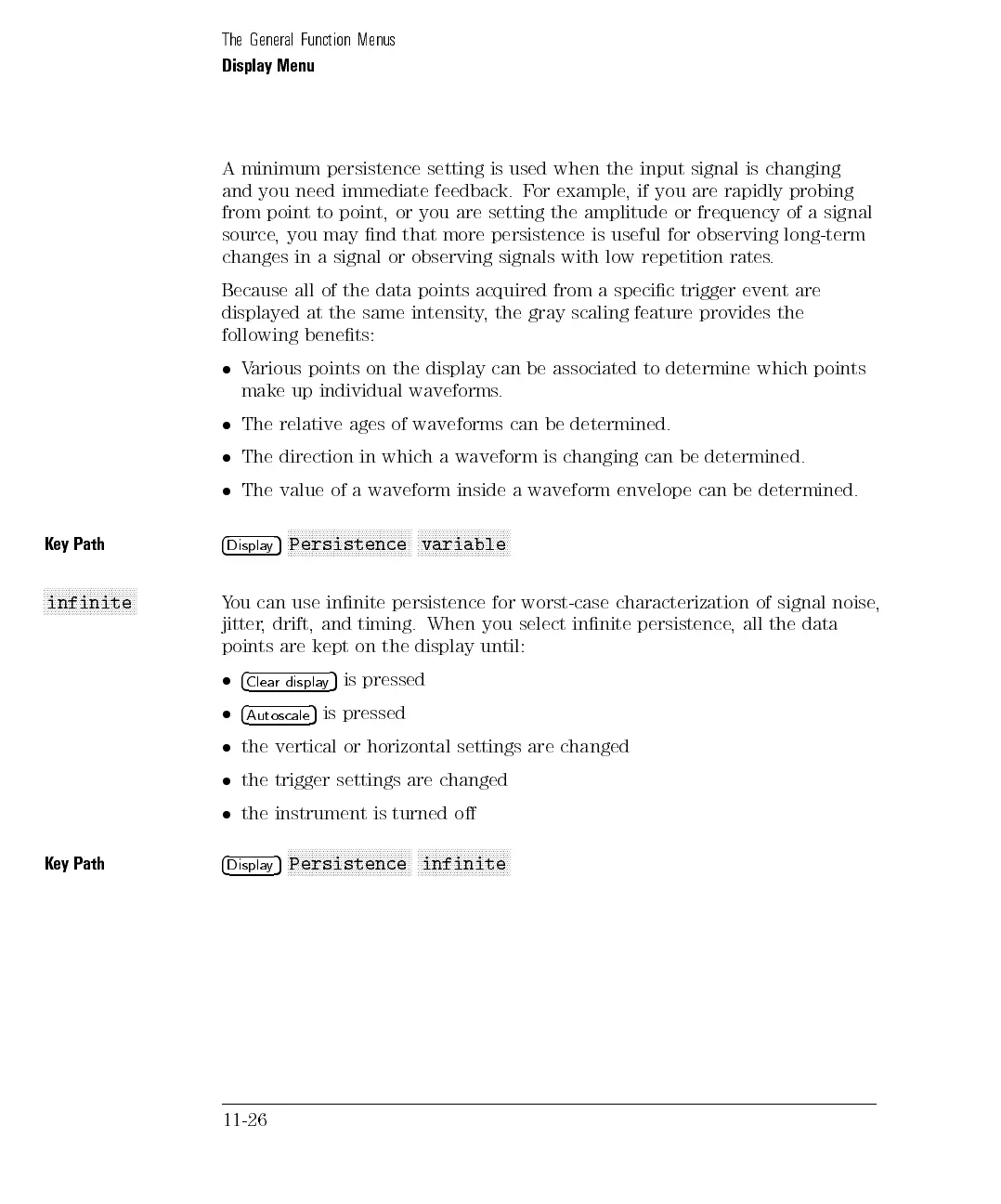The General Function Menus
Display Menu
A minimum persistence setting is used when the input signal is changing
and you need immediate feedback. For example, if you are rapidly probing
from point to point, or you are setting the amplitude or frequency of a signal
source, you may nd that more persistence is useful for observing long-term
changes in a signal or observing signals with low repetition rates.
Because all of the data points acquired from a specic trigger event are
displayed at the same intensity, the gray scaling feature provides the
following benets:
Various points on the display can be associated to determine which points
make up individual waveforms.
The
relative
ages
of
waveforms
can
be
determined.
The direction
in
which
a
waveform
is
changing
can
be
determined.
The
value
of
a
waveform
inside
a
waveform
envelope
can
be
determined.
K
ey
Path
4
Displa
y
5
N
N
N
N
N
N
N
N
NN
NN
N
N
N
N
N
N
N
N
N
N
N
N
N
N
N
N
N
N
N
N
N
NN
Persistence
N
N
N
N
N
N
N
N
NN
NN
N
N
N
N
N
N
N
N
N
N
N
N
N
N
variable
N
N
N
N
N
N
N
N
N
N
N
N
NN
N
N
N
N
N
N
N
N
N
N
N
N
infinite
Y
ou
can
use
innite
persistence
for
worst-case
characterization
of
signal
noise
,
jitter
,
drift,
and
timing.
When
you
select
innite
persistence
,
all
the
data
points
are
kept
on
the
display
until:
4
Clea
r
displa
y
5
is pressed
4
Autoscale
5
is pressed
the
vertical
or
horizontal
settings are
changed
the trigger settings are changed
the instrument is turned o
Key Path
4
Display
5
NNNNNNNNNNNNNNNNNNNNNNNNNNNNNNNNNNN
Persistence
NNNNNNNNNNNNNNNNNNNNNNNNNN
infinite
11-26

